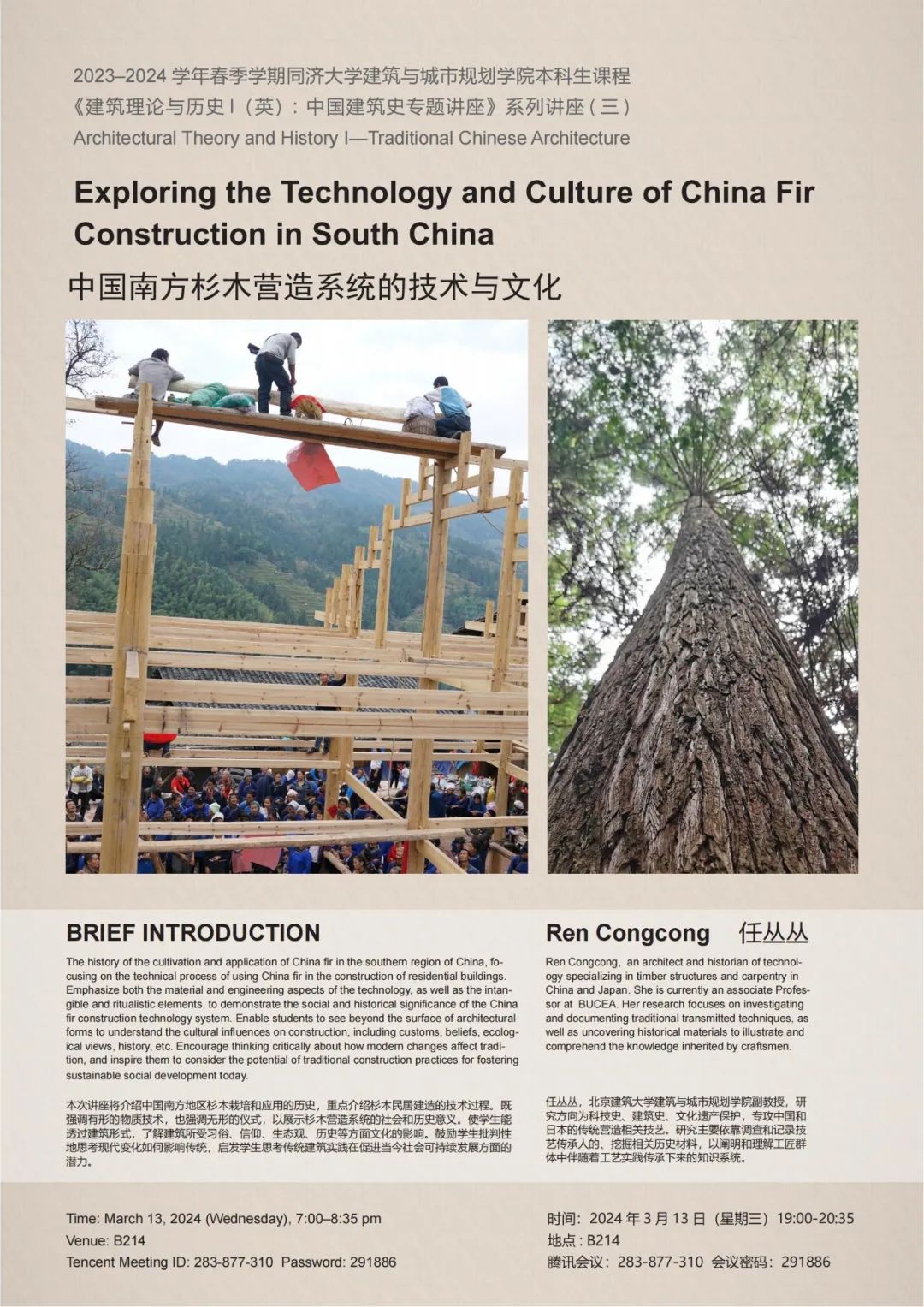

Lecture Series:Architectural Theory and History I—Traditional Chinese Architecture
Exploring the Technology and Culture of China fir Construction in South China
Time: March 13, 2024 (Wednesday), 19:00–20:35
Venue: B214
Tencent Meeting ID:283-877-310
Password: 291886
Speaker: Ren Congcong
Doctor of Engineering in the field of Architecture,
the University of Tokyo
Associate Professor, School of Architecture and
Urban Planning, BUCEA
I am an architect and historian of technology specializing in timber structures and carpentry in China and Japan. My research focuses on investigating and documenting traditional transmitted techniques, as well as uncovering historical materials to illustrate and comprehend the knowledge inherited by craftsmen. Furthermore, I actively explore the cosmological aspects of intellectual history in China that are related to craftsmen's knowledge. These aspects can be traced through the presence of magical and religious rituals in construction practices. In my work, I have conducted follow-up interviews and closely learned from traditional craftsmen, including carpenters and blacksmiths. Additionally, I have critically observed and recorded the ongoing process of heritage preservation in China and Japan, encompassing both tangible heritage, such as architecture, and intangible heritage, such as carpentry techniques.
Brief Introduction:
The history of the cultivation and application of China fir in the southern region of China, focusing on the technical process of using China fir in the construction of residential buildings. Emphasize both the material and engineering aspects of the technology, as well as the intangible and ritualistic elements, to demonstrate the social and historical significance of the China fir construction technology system. Enable students to see beyond the surface of architectural forms to understand the cultural influences on construction, including customs, beliefs, ecological views, history, etc. Encourage thinking critically about how modern changes affect tradition, and inspire them to consider the potential of traditional construction practices for fostering sustainable social development today.
 ABOUT US
ABOUT US




